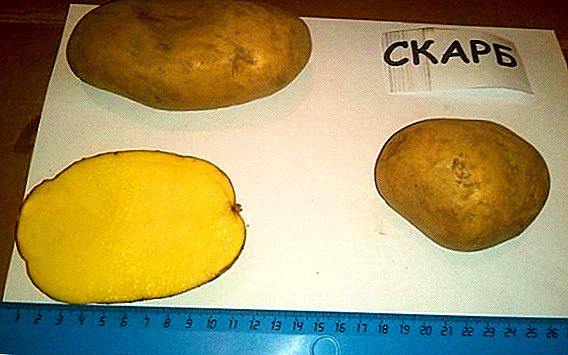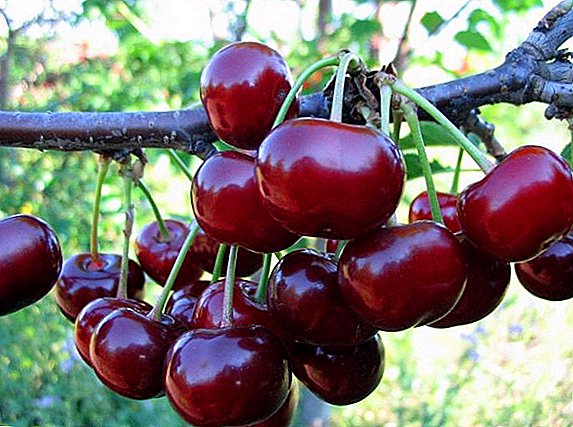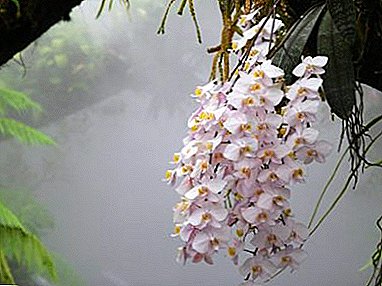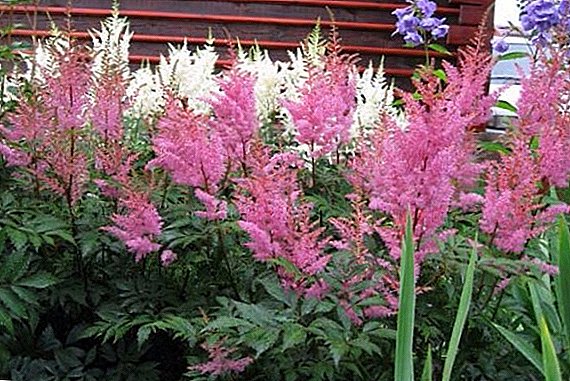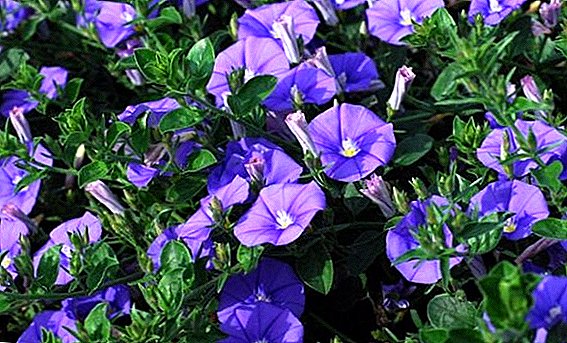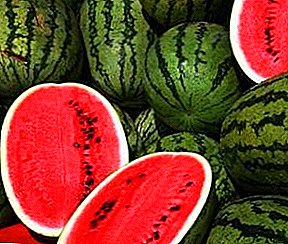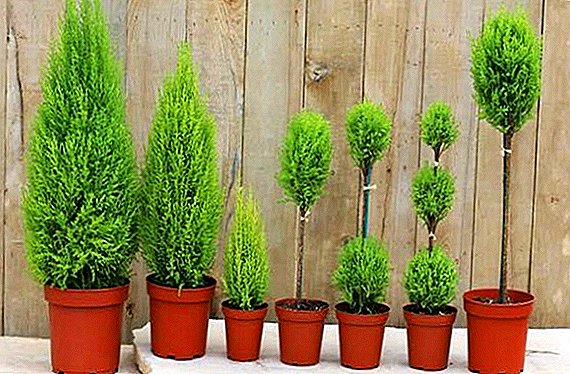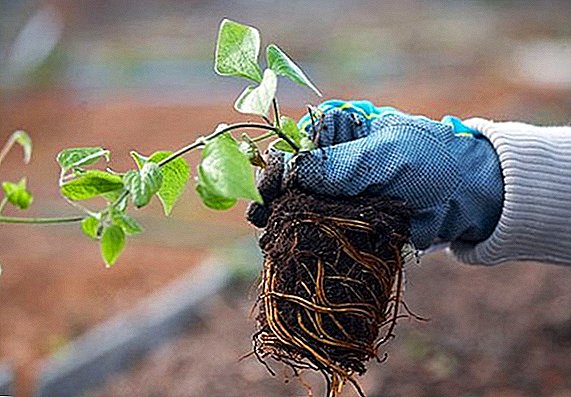 Clematis is the brightest and lush flowering vine that can decorate any land plot. But for its picturesque flowering, it is important to observe the terms of planting and reproduction, to properly care for the plant. In this article we will talk about the features of planting and caring for clematis in the autumn.
Clematis is the brightest and lush flowering vine that can decorate any land plot. But for its picturesque flowering, it is important to observe the terms of planting and reproduction, to properly care for the plant. In this article we will talk about the features of planting and caring for clematis in the autumn.
Autumn deadlines for planting
Experienced gardeners consider autumn to be the most suitable period for planting clematis. In order for the plant to take root and not die in winter, it is necessary to plant it in September - during this period the most optimal temperature of air and soil.  But depending on the weather conditions and the climate of each region, the landing dates are subject to change. If the seedling came to you in November, it is better to put it in the cellar until spring. Otherwise, clematis planted will not have time to settle down before the onset of frost.
But depending on the weather conditions and the climate of each region, the landing dates are subject to change. If the seedling came to you in November, it is better to put it in the cellar until spring. Otherwise, clematis planted will not have time to settle down before the onset of frost.
Learn more about clematis: varieties, cultivation on the site, growth problems, reproduction by grafting and seeds, support yourself.
Where to plant on the site
Clematis grows in one place for about 30 years, so for their lush flowering and vigorous growth you need to consider the basic conditions for choosing a site for their planting:
- The soil. The plant is unpretentious to the composition of the soil, but loves enriched with fertilizer loose soil. Does not take root in the wet and swampy area. It is better to choose an elevated place - it will save clematis during the spring flood.
- Groundwater. The plant is adversely affected by the close standing of groundwater. The optimum level should be no higher than 120 cm from the surface.
- Sunshine. Liana is light-requiring, but it should not be planted in the bright and scorching sun - the flowers fade and the plant fades. Clematis should be under the sun no more than 6 hours a day. For their cultivation suitable place on the south side of the site. Some varieties ("Pink Fantasy", "Hagley Hybrid", "Comtesse de Bouchaud") prefer penumbra and tolerate a lack of light.
- Windy Draft and wind have a detrimental effect on the plant - thin clematis shoots damage and break off, large and delicate flowers tingle. The site must be protected from the wind. You can not plant clematis close to the wall of the house - rainwater will drain from the roof and low water onto it, and it will die from an excess of moisture. The ideal option would be a secluded place in the garden.
Read also about the differences and cultivation of varieties of clematis "Ernest Markham" and "Wil de Lyon".

Soil preparation
The selected area for planting clematis is dug up and cleaned of weeds. The plot with dense clay soil is loosened by the addition of garden soil and sand. If the groundwater is close, at the bottom of the hole is laid a layer of 15 cm drainage of gravel, broken bricks. For the landing pit, a nutrient mixture is prepared: two parts of the earth and humus are mixed, one part of peat, one part of sand. It will be useful to add to the ground two glasses of wood ash, a glass of lime and 150 g of mineral fertilizer.
Important! It is not recommended to use fresh humus to fertilize the soil!
Planting rules seedlings
For the successful rooting of the plant should follow these recommendations:
- The dimensions of the landing hole should be approximately 60 x 60 centimeters. When mass transplanting seedlings dig a common wide trench.
- The distance between adjacent pits should be within 1 meter.
- A landing pit for clematis is made to a depth of two spade bayonets, but not less than 60-70 cm.
- At the bottom of each hole should lay a small layer of drainage of rubble or broken brick, add a mixture of fertile land and fertilizer.
- Before planting, check the condition of the root system of the cutting - it must consist of at least five roots. Clematis seedling should have a few shoots of 2-3 buds on each. No mechanical damage allowed!
- Planting material is planted in the ground with deep penetration - below the ground level should be the root neck of the seedling and a pair of buds escaping. The roots of the plant gently straighten and sprinkle the top with the remnants of the prepared soil. Such planting contributes to the development of a strong root system and reduces the risk of plant diseases. In addition, we must not forget that the depth of planting depends on the size of the seedling - adult plants are buried to a depth of about 15-20 centimeters, young cuttings - to a depth of 5-10 centimeters.
- After planting, clematis needs sufficient watering.
- The landing site can be mulched with sawdust or peat.

Important! Deep planting protects the plant during severe frosts and saves the roots from overheating in the heat.
Video: Clematis planting in autumn
Further care in the fall
Despite the fact that many clematis are not capricious and frost-resistant, in the fall they need special care.
HTo prepare the plant for the winter, you need to do a number of activities:
- Young seedlings need careful shelter for the winter. Cover the plant can be dry leaves, branches and cover with roofing material, top-peat stew.
- No later than October, foliar application from humus and ash is introduced under each bush.
- Watering in the fall is stopped, so that excess moisture during freezing does not destroy the roots.
- One-year-old plants are cleaned of residues of dry foliage cut off, leaving a barrel length of 30 centimeters.
- Clipped clematis spud earth or peat, creating a small mound, covered with branches and cellophane. Plant with long shoots need to roll, wrap non-woven material, lay on the ground, cover with roofing material or slate to protect the roots from excess moisture.
Video: Clematis Shelter for the Winter
Did you know? To scare away the pests of the garden near clematis bushes planted marigold, mint, garlic.
Autumn planting clematis: reviews gardeners


As we see, it is necessary to approach the autumn planting of clematis with all responsibility. If you do not respect the planting dates and all the above recommendations, the young sapling will not be able to survive the winter and will die. But with the proper care of the plant, timely watering and pruning its bright flowers will delight you throughout the next summer.


